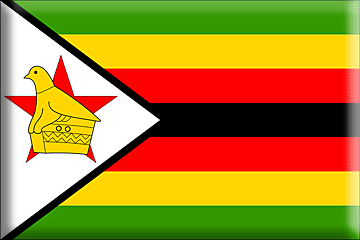Zimbabwe's Chiadzwa diamonds are the latest front where neocolonial interests and the Black man's attempts to own his resources are locking horns. As in any imperialist or colonial process, you find some timid, psychologically damaged uncle Tom singing for empire.
Ladies and gentleman, Uncle Tom Gabriel Shumba for you!!
400kg a month of smuggled stones remains a big problem - but not for SA's champion.
JOHANNESBURG - The Chiadzwa diamond deposit in Zimbabwe, featured on M-Net's Carte Blanche TV programme as a source of illicit diamonds last night, is no cause for alarm at De Beers.
The TV show claimed that the diamond mine in the Chimanimani mountains of eastern Zimbabwe is world scale. Just one mine - Canadile - it said, produced 2 000 carats or 400kg a month.
Virtually all of its production is smuggled via the Mozambican town of Manica on to the black market, circumventing the Kimberley Process, the global initiative to approve legally mined stones and to isolate conflict diamonds.
The TV show quoted Gabriel Shumba of the blood diamonds campaign as saying : "A lot of people have died and crimes against humanity are being committed. Instead of being a blessing, the diamonds are a curse to Zimbabwe."
Shumba alleged that Zanu PF controls the fields through government security forces. He had heard a rumour that Mrs Mugabe claimed 51% ownership of the mine. He said children as young as seven were being forced to scratch with their hands looking for diamonds. He claimed that 400 people have been shot, 200 from "helicopter gunships".
Carte Blanche said the diamonds coming out of Chiadzwa were not strictly speaking conflict or blood diamonds because they do not support a rebel group but (probably) individual members of the Zim government.
Bill McKechnie, for years one of De Beers top geologists and today a consultant with Snowden, said: "It is a fairly-limited-geography secondary deposit. The diamonds are coarse. They are quite large but they have to be cut to get at the better quality inside. They are mainly green and brown. The average value is low - less than $50/ct."
McKechnie said the situation at the Zimbabwean mine was not unlike the chaos and bloodshed in Angola and Sierra Leone in the 1980s.
We were at De Beers coincidentally on Monday for the launch of a new book on the diamond industry: "The Extraordinary World of Diamonds" by geologist Nick Norman.
It is a comprehensive account of the industry - from its beginnings in India through the discoveries on several different continents. His enthusiasm for the subject - diamonds as beautiful evidence of the planet's history - is infectious. The location of many diamond fields on the various continents presents strong evidence for the tectonic plate theory.
His account of the discoveries in Namibia are particularly galvanising, especially if one has been to Kolmanskop, Luderitz and driven through the dunes north of Luderitz. Stauch, discoverer of the Kolmanskop deposit, and his partner found handfuls of diamonds in a few hours at Marchental (Fairy Tale Valley). That evening "little eyes blinked" at their lanterns - diamonds by the thousand.
Norman chronicles advances in technology which brought massive new finds, the rise and decline of De Beers and the CSO as world monopolist up to the present situation. He has new insights into dealings between De Beers and the Soviets in the depths of the Cold War.
Norman records that Russia's Alrosa has overtaken De Beers as the world's biggest producer. The main reason is that De Beers puts mines on care and maintenance during periods of low demand but, because of labour considerations, Alrosa cannot also do so.
The book is no PR stunt for De Beers. It goes into blood diamonds and the illicit diamond trade that has always been and will always be - because of the value and small size of stones that makes them great transportable assets.
Write to David Carte: davidcarte@moneyweb.co.za
